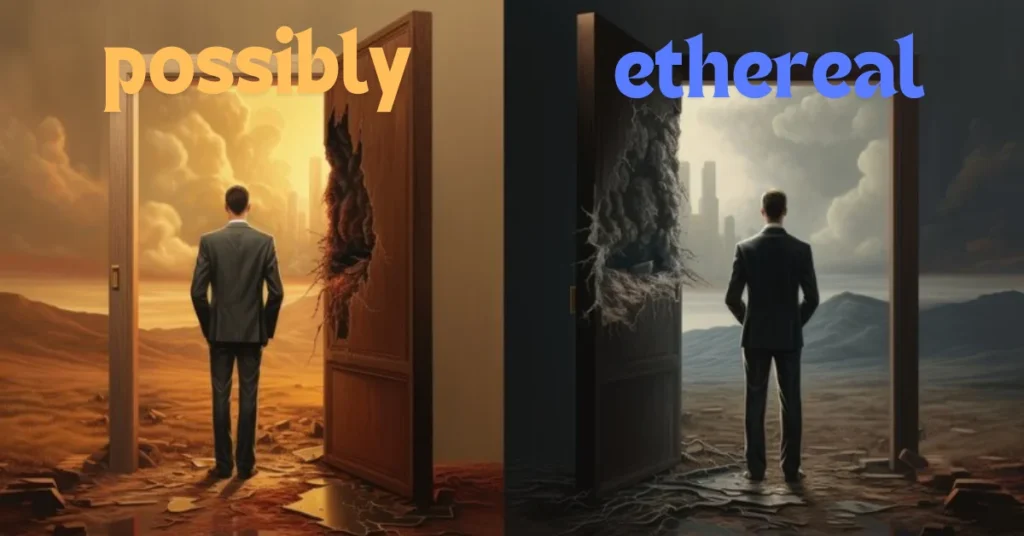Introduction to PossiblyEthereal
PossiblyEthereal—a term that feels otherworldly, futuristic, and almost intangible. But what exactly does it mean? Is it simply a buzzword in modern tech culture, or does it point to something more profound? This article seeks to unravel the mystery behind PossiblyEthereal, exploring its roots, its impact across various domains, and the ethical challenges it presents.
What Does PossiblyEthereal Mean?
At its core, “PossiblyEthereal” evokes the idea of something that is not entirely material or concrete. It blends the realm of possibility with the ethereal, the intangible, or the otherworldly. This term is versatile, used in tech, art, philosophy, and even social media, describing elements that lie between reality and the unknown.
Definition of PossiblyEthereal
PossiblyEthereal can be understood as a concept that bridges the gap between what is possible and what is transcendent. It refers to ideas, technologies, or even creative expressions that challenge our traditional perceptions of reality and open the door to new dimensions of thought.
Origin and Etymology
The term itself is a portmanteau of “possible” and “ethereal.” While “ethereal” relates to something delicate, light, or celestial, “possible” brings in the notion of future potential and uncertainty. Together, they form a concept that symbolizes the fine line between the physical and the metaphysical.
The Rise of PossiblyEthereal in Digital Culture
In recent years, the term has been embraced by digital culture. It reflects the growing complexity of our online worlds and digital landscapes. Whether used to describe virtual experiences, AI innovations, or emerging tech, PossiblyEthereal represents a move toward realms we can conceptualize but not fully grasp.
ALSO READ : Unlocking Vaçpr: Future Tech Revealed
PossiblyEthereal vs Traditional Concepts
PossiblyEthereal challenges many traditional frameworks. It contrasts with rigid, materialistic views of the world by suggesting that reality itself is fluid, layered, and subject to the whims of both possibility and imagination. Traditional concepts of space, time, and existence are questioned in the PossiblyEthereal framework, making room for a rethinking of these boundaries.
Philosophical Underpinnings of PossiblyEthereal
How PossiblyEthereal Challenges Modern Philosophy
The introduction of PossiblyEthereal to philosophical discourse presents exciting new challenges. It aligns with postmodern ideas of fluidity, where absolute truths and binary distinctions are seen as overly simplistic. By invoking the ethereal, PossiblyEthereal invites deeper consideration of abstract principles such as time, identity, and existence.
Connection to Existential and Metaphysical Thought
PossiblyEthereal also resonates with existentialist and metaphysical thought, particularly the tension between what is real and what is imagined. It mirrors existential questions about life’s purpose and our place in an incomprehensible universe, offering a more ambiguous and speculative path forward.
ALSO READ: Explore Harmonicodecom: The Future of Innovation
Impact of PossiblyEthereal on Technology and Society
PossiblyEthereal in AI and Technology Development
In technology, PossiblyEthereal has become synonymous with cutting-edge advancements, particularly in AI and machine learning. AI developers aim to create systems that border on the ethereal—thinking, reasoning, and even “feeling” like humans, but without physical constraints.
Shifting Perceptions of Reality
As PossiblyEthereal technologies continue to develop, our perception of reality itself is shifting. With virtual and augmented realities becoming mainstream, the lines between the physical world and digital experiences blur. PossiblyEthereal encapsulates this new hybrid world, where the real and the imaginary coexist.
PossiblyEthereal in Art and Creativity
The Role of PossiblyEthereal in Artistic Expression
PossiblyEthereal is especially prevalent in modern art, where creators play with the idea of the intangible. Through digital art, conceptual installations, and experimental media, artists are pushing boundaries, exploring themes that challenge our conventional understanding of reality and perception.
ALSO READ: Explore Harmonicodecom: The Future of Innovation
How Creators Interpret the Ethereal Concept
Artists often interpret the ethereal as a representation of the human psyche or spirit, tapping into ideas of dreamscapes and parallel worlds. The term gives creative thinkers a vocabulary to explore these ideas without being confined by traditional, materialistic interpretations of existence.
Ethical Considerations Surrounding PossiblyEthereal
Ethical Dilemmas in Tech and Art
While PossiblyEthereal opens up vast possibilities, it also raises significant ethical questions. In technology, the development of AI and virtual realities based on this concept must consider how these innovations affect human interactions, privacy, and autonomy.
Balancing Innovation and Ethical Reality
In the art world, the notion of possibly ethereal ideas leads to debates about the authenticity and integrity of creative work. Should artists be bound by ethical constraints when dealing with intangible, ethereal concepts? This balance between innovation and ethical responsibility is a core challenge.
ALSO READ: Sarah Ziolkowska: The Woman Behind the Comedy Fame
How PossiblyEthereal Affects Modern Consciousness
Psychological and Cognitive Aspects
As we delve into the ethereal, it’s important to consider the psychological effects. The human mind may struggle to differentiate between the physical and virtual, particularly as technology progresses. PossiblyEthereal forces us to confront new layers of consciousness and perception.
The Human Connection with the Ethereal
On a deeper level, PossiblyEthereal connects us with our desire to transcend the physical world. It reflects our yearning for something beyond, whether through technology, spirituality, or art. This connection speaks to a fundamental aspect of human nature.
Real-World Applications of PossiblyEthereal
Technology-driven Applications
From virtual reality (VR) to immersive AI systems, PossiblyEthereal is driving innovation across multiple sectors. These applications extend into entertainment, healthcare, and even education, where virtual worlds offer experiences that defy traditional boundaries.
Artistic and Creative Implementations
In the creative sphere, PossiblyEthereal can be found in digital exhibitions, immersive theater experiences, and multimedia art. These artistic applications encourage audiences to explore new ways of thinking and perceiving the world around them.
Future of PossiblyEthereal: Trends and Speculations
Predicting Future Ethical Challenges
As technology progresses, the PossiblyEthereal concept will likely present new ethical challenges. Questions about privacy, human agency, and identity will become more complex as we delve further into ethereal technologies.
Upcoming Innovations in the PossiblyEthereal Realm
The future holds endless possibilities for PossiblyEthereal. From AI that can simulate emotions to virtual worlds indistinguishable from reality, we are on the cusp of technological breakthroughs that may redefine human existence.
PossiblyEthereal’s and the Metaverse
How the Ethereal Concept Enhances the Virtual World
PossiblyEthereal’s is deeply intertwined with the rise of the metaverse—a digital space where the ethereal nature of existence becomes palpable. Users in the metaverse interact in ways that transcend physical limitations, representing a shift toward a PossiblyEthereal’s reality.
Implications for Social Interaction and Reality Perception
In the metaverse, social interactions take on new meaning. The virtual and ethereal worlds blend, leading us to question what is real and how we define personal connections.
ALSO READ: How to Turn Your Ideas into Effective Explainer Videos
. What is “PossiblyEthereal’s”?
“PossiblyEthereal’s” is a term that blends the ideas of possibility and the ethereal, evoking concepts that are intangible and not fully grounded in reality. It represents ideas, technologies, or creative expressions that challenge traditional perceptions of what is possible and what is beyond the physical realm. This term is often used in contexts ranging from technology and art to philosophy, describing elements that bridge the gap between reality and the unknown.
How Does PossiblyEthereal’s Influence Modern Technology?
PossiblyEthereal’s impacts modern technology by driving advancements in fields like AI and virtual reality. Technologies inspired by this concept aim to simulate experiences that feel almost real but exist in a digital or abstract space. For instance, AI systems that emulate human-like thinking or virtual environments that blur the lines between physical and digital realities are examples of how PossiblyEthereal’s shapes tech innovation.
In What Ways is PossiblyEthereal’s Relevant to Artistic Expression?
In art, PossiblyEthereal’s is relevant because it allows artists to explore themes that go beyond the material world. Artists use this concept to create works that challenge conventional notions of reality, often incorporating digital tools and immersive experiences. This exploration leads to new forms of artistic expression that invite audiences to engage with the intangible and the speculative.
What Ethical Challenges Does the Concept of PossiblyEthereal’s Present?
PossiblyEthereal’s introduces several ethical challenges, particularly concerning the development of AI and virtual realities. Issues include privacy concerns, the authenticity of virtual experiences, and the potential for technology to manipulate or control human interactions. Balancing innovation with ethical considerations is crucial to ensure that these advancements benefit society without compromising fundamental values.
How Might PossiblyEthereal’s Shape the Future of the Metaverse?
PossiblyEthereal’s is expected to play a significant role in the development of the metaverse, where digital and ethereal experiences merge. In the metaverse, users interact in virtual spaces that feel real but are fundamentally different from the physical world. This integration of PossiblyEthereal’s concepts will likely enhance how we perceive social interactions and reality itself, pushing the boundaries of what we consider possible in digital environments.







